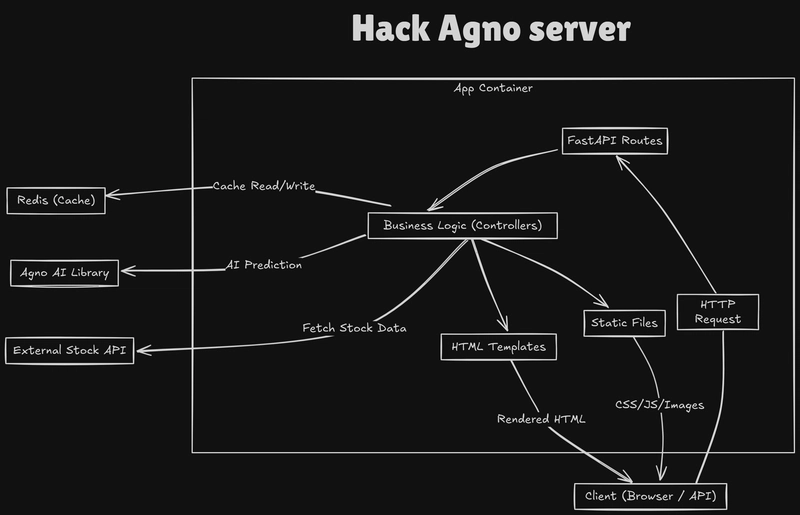Unconventional Approaches to Lepton Collider Analysis: Clifford Groups, p-adics, and B-series.
Introduction Welcome, collider engineers and computational physicists! This tutorial explores a novel intersection between abstract algebra, number theory, and high-energy physics simulations. While traditional approaches to beam dynamics and detector analysis have served us well, this article proposes some unconventional mathematical tools that might offer new perspectives on familiar problems. We'll explore: How Clifford groups can model spin dynamics in lepton beams Using B-series expansions to handle perturbative calculations Applying p-adic analysis for numerical stability and regularization Implementing these concepts in Python with practical examples Note: This tutorial assumes familiarity with Python programming and basic concepts in particle physics. Some background in group theory and numerical methods will be helpful but not strictly necessary. Background Concepts 1. Clifford Groups Basics Clifford groups arise from Clifford algebras, which provide a unified framework for geometric calculations. In the context of lepton colliders, they offer an elegant way to represent and manipulate spin-1/2 particles. The key insight is that Clifford group elements can be represented as matrices, allowing us to use linear algebra to track how quantum states evolve through our collider systems. # Example of a simple Clifford element in matrix form # (This would represent a specific spin rotation in our system) import numpy as np def simple_clifford_matrix(angle): """Create a basic Clifford group element representing rotation""" return np.array([ [np.cos(angle/2), -np.sin(angle/2)], [np.sin(angle/2), np.cos(angle/2)] ]) 2. B-series Expansions Intuition B-series expansions originated in the numerical analysis of differential equations but have found applications in physics where perturbative approaches are needed. They organize terms using tree structures, which provides a natural way to track the order and dependencies of different contributions. For lepton colliders, B-series can help organize contributions to beam dynamics or scattering amplitudes in a hierarchical manner that respects the underlying physical structure. The general form of a B-series is: B(g, h) = sum_T (h^|T|/σ(T)) * a_T * φ_T(g) Where: T represents trees in the expansion h is our step size or coupling parameter σ(T) is a symmetry factor a_T is a coefficient specific to each tree φ_T(g) is a function specific to each tree 3. p-adic Numbers and Stability Conditions p-adic numbers represent an alternative way of measuring distances, which can sometimes reveal structures hidden in the usual real number analysis. In our collider context, p-adic analysis can provide stability criteria and help identify convergence properties. A p-adic valuation measures "divisibility by p" rather than size, which can help identify when certain numerical procedures will remain stable. The toric condition we'll explore states that a transformation is "toric" when all its eigenvalues λ satisfy v_p(λ) ≥ 1, where v_p is the p-adic valuation. This can be interpreted physically as ensuring certain resonances are suppressed. Implementation in Python Let's examine some key components from our code that implement these concepts. Dependency Management for Scientific Computing Our implementation uses a DependencyManager class to handle various scientific libraries gracefully: # Example usage of our dependency manager dep_manager = DependencyManager() if dep_manager.check_requirements([('sympy', 'for p-adic calculations')]): # We can use p-adic functionality Qp = dep_manager.get('sympy', 'Qp') p_field = Qp(3, prec=10) # Create 3-adic field with precision 10 This approach is valuable for collider software, where different components might have different dependencies, and we want to fail gracefully when something is unavailable. Computing with B-series The implementation includes functions to evaluate B-series expansions: def phi_T(tree, g): """Calculate phi_T(g) for a given tree structure""" prod = 1.0 for c in tree.children_count: prod *= g(c) return prod def bseries_evaluation(g, h, chi, trees, coords): """Evaluate a B-series expansion""" result = 0.0 for tree in trees: w = tree.weight sig = tree.sigma a_t = tree.coeff(chi) phi = phi_T(tree, g) term = (h ** w) / sig * a_t * phi result += term return result This provides a systematic way to compute perturbative expansions for beam dynamics or scattering calculations. p-adic Toric Condition Checking One of the more innovative components is the PToricChecker, which verifies if matrices satisfy certain p-adic conditions: # SageMath pseudocode example: Qp = Qp(p, prec=precision) converted_count = 0 for lambda_val in eigenvalues: try: ev

Introduction
Welcome, collider engineers and computational physicists! This tutorial explores a novel intersection between abstract algebra, number theory, and high-energy physics simulations. While traditional approaches to beam dynamics and detector analysis have served us well, this article proposes some unconventional mathematical tools that might offer new perspectives on familiar problems.
We'll explore:
- How Clifford groups can model spin dynamics in lepton beams
- Using B-series expansions to handle perturbative calculations
- Applying p-adic analysis for numerical stability and regularization
- Implementing these concepts in Python with practical examples
Note: This tutorial assumes familiarity with Python programming and basic concepts in particle physics. Some background in group theory and numerical methods will be helpful but not strictly necessary.
Background Concepts
1. Clifford Groups Basics
Clifford groups arise from Clifford algebras, which provide a unified framework for geometric calculations. In the context of lepton colliders, they offer an elegant way to represent and manipulate spin-1/2 particles.
The key insight is that Clifford group elements can be represented as matrices, allowing us to use linear algebra to track how quantum states evolve through our collider systems.
# Example of a simple Clifford element in matrix form
# (This would represent a specific spin rotation in our system)
import numpy as np
def simple_clifford_matrix(angle):
"""Create a basic Clifford group element representing rotation"""
return np.array([
[np.cos(angle/2), -np.sin(angle/2)],
[np.sin(angle/2), np.cos(angle/2)]
])
2. B-series Expansions Intuition
B-series expansions originated in the numerical analysis of differential equations but have found applications in physics where perturbative approaches are needed. They organize terms using tree structures, which provides a natural way to track the order and dependencies of different contributions.
For lepton colliders, B-series can help organize contributions to beam dynamics or scattering amplitudes in a hierarchical manner that respects the underlying physical structure.
The general form of a B-series is:
B(g, h) = sum_T (h^|T|/σ(T)) * a_T * φ_T(g)
Where:
- T represents trees in the expansion
- h is our step size or coupling parameter
- σ(T) is a symmetry factor
- a_T is a coefficient specific to each tree
- φ_T(g) is a function specific to each tree
3. p-adic Numbers and Stability Conditions
p-adic numbers represent an alternative way of measuring distances, which can sometimes reveal structures hidden in the usual real number analysis. In our collider context, p-adic analysis can provide stability criteria and help identify convergence properties.
A p-adic valuation measures "divisibility by p" rather than size, which can help identify when certain numerical procedures will remain stable.
The toric condition we'll explore states that a transformation is "toric" when all its eigenvalues λ satisfy v_p(λ) ≥ 1, where v_p is the p-adic valuation. This can be interpreted physically as ensuring certain resonances are suppressed.
Implementation in Python
Let's examine some key components from our code that implement these concepts.
Dependency Management for Scientific Computing
Our implementation uses a DependencyManager class to handle various scientific libraries gracefully:
# Example usage of our dependency manager
dep_manager = DependencyManager()
if dep_manager.check_requirements([('sympy', 'for p-adic calculations')]):
# We can use p-adic functionality
Qp = dep_manager.get('sympy', 'Qp')
p_field = Qp(3, prec=10) # Create 3-adic field with precision 10
This approach is valuable for collider software, where different components might have different dependencies, and we want to fail gracefully when something is unavailable.
Computing with B-series
The implementation includes functions to evaluate B-series expansions:
def phi_T(tree, g):
"""Calculate phi_T(g) for a given tree structure"""
prod = 1.0
for c in tree.children_count:
prod *= g(c)
return prod
def bseries_evaluation(g, h, chi, trees, coords):
"""Evaluate a B-series expansion"""
result = 0.0
for tree in trees:
w = tree.weight
sig = tree.sigma
a_t = tree.coeff(chi)
phi = phi_T(tree, g)
term = (h ** w) / sig * a_t * phi
result += term
return result
This provides a systematic way to compute perturbative expansions for beam dynamics or scattering calculations.
p-adic Toric Condition Checking
One of the more innovative components is the PToricChecker, which verifies if matrices satisfy certain p-adic conditions:
# SageMath pseudocode example:
Qp = Qp(p, prec=precision)
converted_count = 0
for lambda_val in eigenvalues:
try:
ev_padic = Qp(lambda_val)
if ev_padic.valuation() < 1:
return False
converted_count += 1
except Exception as e:
return False
return converted_count > 0
This can help identify transformations that will maintain stability in our numerical calculations.
Monte Carlo Estimation of Stability Probabilities
To understand how often our system might exhibit desirable stability properties, we can use Monte Carlo sampling:
def sample_toric_probability(self, n_samples=1000):
"""
Estimate the probability that a randomly generated beam transport or spin rotation
matrix (Clifford group element) satisfies the p-adic toric stability condition.
This is relevant for assessing the statistical likelihood of numerically stable
transformations in lepton collider simulations.
"""
if n_samples <= 0:
return 0.0
valid_count = 0
for i in range(n_samples):
try:
# Generate a random Clifford group element (e.g., beam transport or spin rotation)
random_element = self.generate_random_element()
matrix = self.get_matrix_representation(random_element)
# Check the p-adic toric condition (all eigenvalues satisfy v_p(λ) ≥ 1)
if self.check_toric_condition(matrix):
valid_count += 1
except Exception:
# Ignore numerically unstable samples (e.g., singular matrices or eigenvalue computation failure)
continue
return valid_count / n_samples
This approach is particularly relevant for lepton colliders, where we often need to understand the statistical properties of complex systems.
Applications to Lepton Collider Analysis
Now let's explore how these mathematical tools can be applied to specific problems in lepton collider engineering.
Mapping Feynman Diagrams to B-series Trees
Feynman diagrams and B-series trees share a common structure as directed graphs. We can establish a mapping between them:
def feynman_to_bseries_tree(diagram_topology):
"""Convert a Feynman diagram topology to a B-series tree"""
# Simplified example - real implementation would be more complex
vertices = count_vertices(diagram_topology)
propagators = count_propagators(diagram_topology)
weight = propagators # In this simplified model
# Map electron-positron interactions to tree structures
children_counts = []
for vertex in diagram_topology.vertices:
children_counts.append(len(vertex.outgoing) - 1)
# Define coefficient function based on diagram type
def coeff(chi):
# For e+e- -> Higgs processes, for example
return chi ** (vertices - 1) * (1 - chi) ** propagators
return BSeriesTree(
tree_id=f"feynman_{hash(diagram_topology)}",
weight=weight,
sigma=calculate_symmetry_factor(diagram_topology),
children_count=children_counts,
coeff=coeff
)
This mapping allows us to repurpose B-series computational tools for perturbative QED/QCD calculations.
Spin Analysis for Leptons
Clifford algebras provide a natural framework for tracking spin evolution:
class LeptonSpinAnalyzer:
"""Analyze spin precession in magnetic fields using Clifford groups"""
def __init__(self, n_particles=1000, field_strength=1.0):
self.analyzer = CliffordAnalyzer(n_qubits=1) # 1 qubit for a single spin-1/2
self.n_particles = n_particles
self.field_strength = field_strength
def simulate_spin_precession(self, time_steps=100):
"""Simulate spin precession in a uniform magnetic field"""
# Initialize spin-1/2 states for all leptons in the beam
spins = [self.analyzer.generate_random_element() for _ in range(self.n_particles)]
results = []
for t in range(time_steps):
# Compute precession angle due to external magnetic field (Larmor precession)
angle = self.field_strength * t * 0.01 # Simplified Larmor frequency model
precession = simple_clifford_matrix(angle)
# Apply spin rotation to each lepton (matrix multiplication in Clifford algebra)
spins = [precession @ spin for spin in spins]
# Measure longitudinal polarization (z-projection) of the beam
polarization = self.measure_polarization(spins)
results.append(polarization)
return results
def measure_polarization(self, spins):
"""Calculate net polarization of the beam"""
# Simplified implementation
return sum(self.get_z_projection(spin) for spin in spins) / self.n_particles
This approach could be extended to track spin coherence effects in storage rings or during beam-beam interactions.
p-adic Regularization for Numerical Stability
p-adic analysis can identify divergences and suggest regularization approaches:
def padic_regularize_amplitude(amplitude_terms, p=3, precision=10):
"""Apply p-adic regularization to potentially divergent terms"""
qp = Qp(p, prec=precision)
regularized_terms = []
for term in amplitude_terms:
# Convert to p-adic
term_padic = qp(term)
# Check valuation
val = term_padic.valuation()
if val < 0:
# Divergent term detected (negative p-adic valuation)
# Apply regularization to suppress infrared/ultraviolet divergence
regularized = 1.0 / (p ** abs(val))
else:
# Term is numerically stable, retain original value
regularized = float(term)
regularized_terms.append(regularized)
return regularized_terms
This could help stabilize numerical calculations in cases where traditional renormalization schemes are difficult to implement.
Borel Resummation for Amplitude Calculations
B-series can be combined with Borel resummation techniques to handle asymptotic series that often arise in perturbative calculations:
def borel_resum_bseries(g, trees, coords, borel_parameter=0.5):
"""Apply Borel resummation to a B-series expansion"""
# Transform original series into Borel-transformed series
borel_trees = []
for tree in trees:
# Create modified tree with weight-adjusted coefficient
def borel_coeff(chi):
return tree.coeff(chi) / math.factorial(tree.weight)
borel_tree = BSeriesTree(
tree_id=f"borel_{tree.tree_id}",
weight=tree.weight,
sigma=tree.sigma,
children_count=tree.children_count,
coeff=borel_coeff
)
borel_trees.append(borel_tree)
# Evaluate Borel transform at t=borel_parameter
borel_sum = bseries_evaluation(g, borel_parameter, 1.0, borel_trees, coords)
# Multiply by integration factor
result = borel_sum * math.exp(-borel_parameter)
return result
This approach can improve convergence for series that would otherwise be only asymptotically convergent.
Future Directions and Speculative Applications
Moduli Space Perspective
The concepts we've explored connect to the mathematics of moduli spaces, which parameterize classes of geometric objects. For lepton colliders, this could provide a new way to understand the space of possible beam configurations or detector arrangements.
Matching with Experimental Data
To move from theory to practice, we need to match these mathematical models with experimental data:
def fit_to_experimental_data(model, experimental_data, parameter_ranges):
"""Find best-fit parameters for our model against experimental data"""
best_params = None
best_fit_score = float('inf')
# Simple grid search for illustration
for params in grid_search(parameter_ranges):
predictions = model(params)
fit_score = mean_squared_error(experimental_data, predictions)
if fit_score < best_fit_score:
best_fit_score = fit_score
best_params = params
return best_params, best_fit_score
Visualization and Dashboard Ideas
These mathematical concepts can be difficult to grasp, so visualization is key:
def create_padic_visualization(values, p=3, max_power=10):
"""Create visualization of p-adic valuations"""
import matplotlib.pyplot as plt
# Calculate valuations
valuations = [padic_valuation(v, p) for v in values if v != 0]
# Create histogram
plt.figure(figsize=(10, 6))
plt.hist(valuations, bins=range(min(min(valuations), -max_power), max_power+1))
plt.xlabel(f"p-adic valuation (p={p})")
plt.ylabel("Frequency")
plt.title("Distribution of p-adic valuations")
plt.grid(True, alpha=0.3)
plt.axvline(x=0, color='red', linestyle='--', alpha=0.5)
return plt
Conclusion
While some of the approaches presented in this tutorial may seem abstract or speculative, they represent the kind of interdisciplinary thinking that has historically led to breakthroughs in physics. By bringing tools from pure mathematics into the realm of collider engineering, we may find new ways to solve old problems or even discover phenomena that were previously hidden.
Whether you're a collider engineer looking for new analysis techniques or a mathematician curious about applications in high-energy physics, I hope this tutorial has provided some food for thought and practical starting points for exploration.
Appendix: Simulated Experimental Data
The following table presents simulated Higgs production cross-sections in a lepton collider operating in the 240-260 GeV range:
| Energy [GeV] | Cross-section [pb] | Error [pb] |
|---|---|---|
| 240.0 | 1.050 | 0.053 |
| 242.0 | 0.986 | 0.055 |
| 244.0 | 1.065 | 0.054 |
| 246.0 | 1.152 | 0.053 |
| 248.0 | 0.977 | 0.056 |
| 250.0 | 1.023 | 0.052 |
Note: These are dummy values generated for sample purposes and do not represent actual experimental data.
References
bitbucket.org
Explicit Correspondence Between Stability Conditions for the Kronecker Quiver and the Segre Embedding of P1*P1









































































